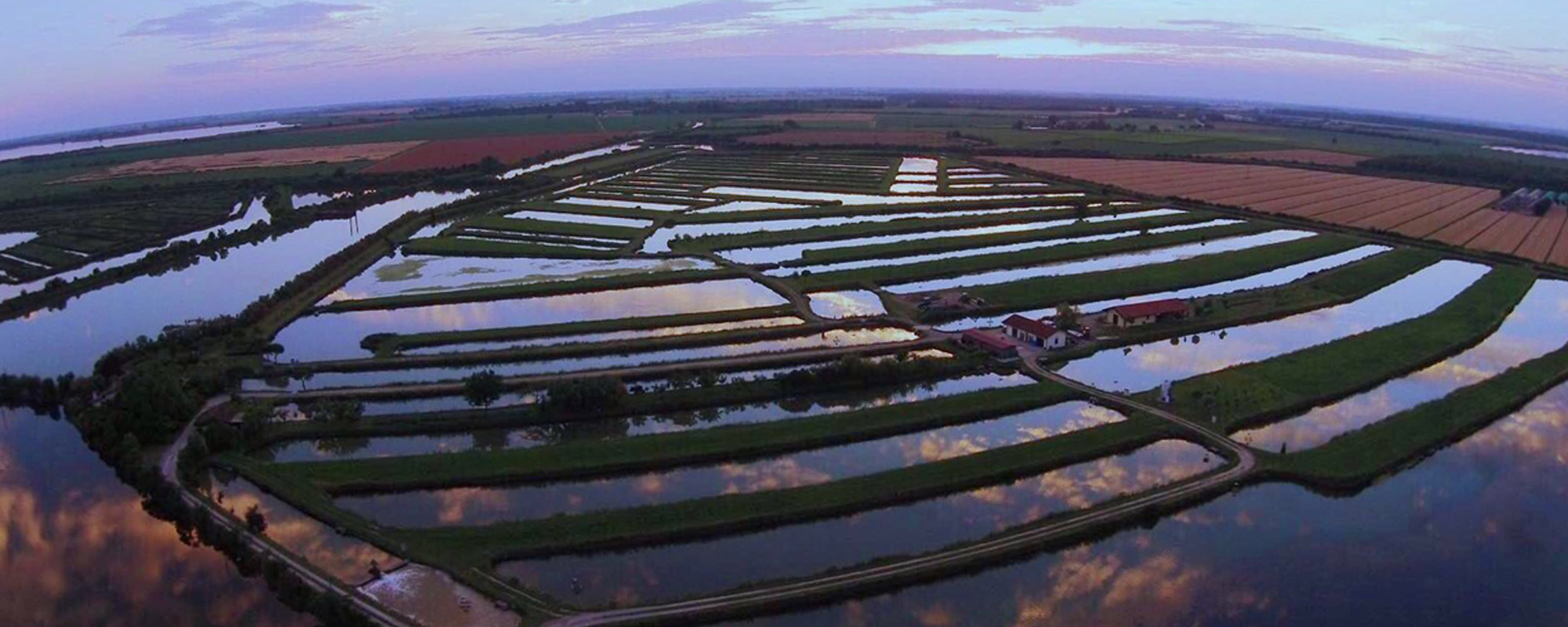Fish farming
Text by Vittorio Nalon.
Fishing valleys are a characteristic feature of the area surrounding the town of Marano Lagunare: in fact, they form a single ring around it, the likes of which cannot be seen in any other seafaring town in the northern Adriatic.
You can only really fully appreciate this “grid” in aerial photographs, although it is easy to see if you take a stroll along the embankments around the edges of the lagoon, leaving from the outskirts of town.
The valleys are located in narrow areas of land, between the hinterland and the water, representing a clever example of how humans can enhance a poor environment that is difficult to work with, without upsetting it.
The unique and peculiar natural phenomena in this particular area are the reasons why the fishing valleys exist: the tidal activity and the lagoon’s rich nutrients generated by the sea water being mixed with the fresh water coming from the springs of the Bassa Friulana.
For centuries, humans have been learning how to manage these natural phenomena inside the valleys, farming valuable fish species such as sea bream and bass. Over time, the figure of the “valley fish farmer” has become more and more consolidated, a proud owner of closely-guarded know-how and expertise.
In addition to fish farming, the valleys are also home to viticulture on the pieces of land that separate the stretches of water. Today, this represents an important wine production niche that is held in high esteem thanks to its unique characteristics that only this unique environment can offer.
Valley fish farming is currently suffering due to the exponential growth in intensive production of sea bream and bass, carried out in floating cages as part of mariculture activities: many valley fish farmers have ceased their activities, but this does not mean that the valleys have lost their appeal as a unique environment.
It’s fair to say that some valleys are on stand-by, waiting for the high quality of their fish production to be rediscovered, which is the only method that respects natural rhythms and environmental sustainability.
The role of protecting the culture, history and environment of the fishing valleys remains in tact, in the certainty that these values must be kept alive, even at such a difficult time.

